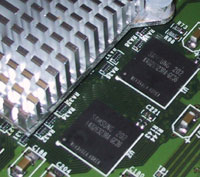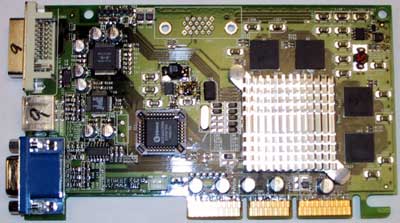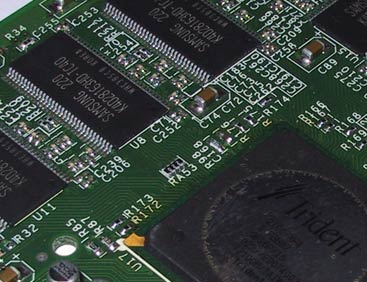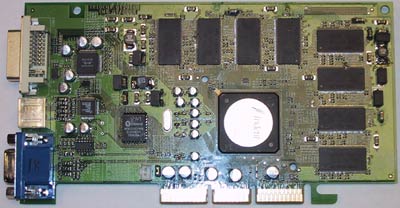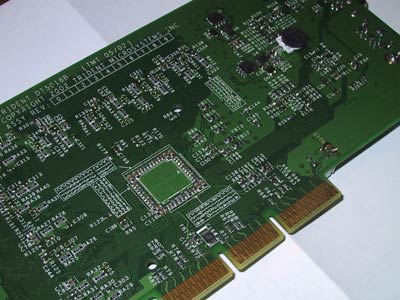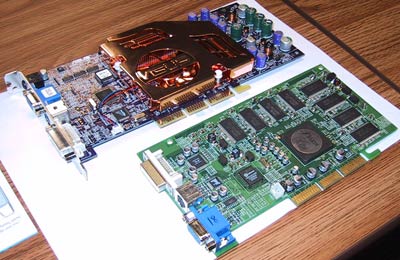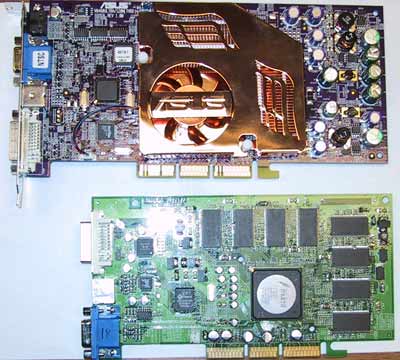
Original Link: https://www.anandtech.com/show/968
This article first appeared on the AnandTech Newsletter. Click here to subscribe and get the latest news and reviews before anyone else.
Over promising and under delivering, that's what we were afraid of happening when Trident first told us about their XP4. And who wouldn't? After all, Trident was promising 80% of the performance of a GeForce4 Ti 4600 at a price tag under $99. Recently Trident became a little more ambitious and announced that their top of the line XP4 T3 would be able to deliver 70% of the performance of a Radeon 9700 Pro.
We're still about two weeks away from receiving hardware from Trident for review but we were able to schedule an impromptu meeting with them when they came to Raleigh. The drivers are still far away from being ready so the performance is understandably not up to par with what Trident's expectations are, but they are still on track to achieving their performance goals.
As a quick refresher here are the three members of the Trident XP4 line and their basic specifications:
|
|
Trident
XP4 T1
|
Trident
XP4 T2
|
Trident
XP4 T3
|
| Core Clock |
250MHz
|
250MHz
|
300MHz
|
| Memory Bus |
64-bit
DDR
|
128-bit
DDR
|
128-bit
DDR
|
| Memory Clock |
250MHz
|
250MHz
|
300
- 350MHz
|
| Memory Size |
64MB
|
64MB
|
128MB
|
For more information make sure you read our XP4 Preview.
The XP4 Reference Boards
Trident brought down a number of things to show off, but most were mechanical samples. The only functional hardware they had was a board based on the XP4 T2 chip running at 250MHz with 250MHz DDR memory (effectively 500MHz).
All of the XP4 chips (T1, T2 & T3) will run cool enough that they won't require any active cooling, thus you'll only find a passive heatsink on the reference boards. The T2 board is pictured below.
Trident had a mechanical sample of their T3 reference board as well; the non-functioning nature of the board explains the fact that it had slower memory than the T2 sample (see previous page); the mechanical sample is pictured below.
XP4 vs GeForce4
We took some comparison shots of Trident's XP4 T3 reference board and a GeForce4 Ti 4600:

You can see the difference in power circuitry between the two cards here. The
Ti 4600's power requirements contribute to the pricetag of boards.
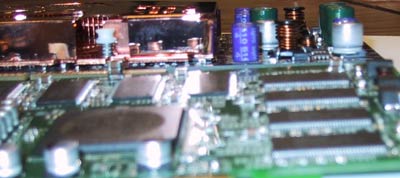
Another power comparison shot
XP4 in a PC Card
An obvious application for the XP4 is the mobile market and it will be only a matter of months before the XP4 is announced in its first mobile home. The mobile XP4 will be very similar to the desktop solution but most likely running at a 200MHz core clock frequency due to power limitations.
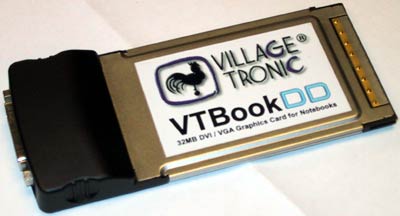
Trident had a PC card design for the XP4, which would allow notebook users to have DVI/VGA output and instant multimonitor support through a simple PC card.
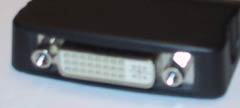
DVI interface through a PC card
The part Trident had at our meeting was based on a XP2 platform but they are confident that the XP4 will work in such a design just as well because of its low power. Granted that the 32-bit Cardbus interface won't provide much bandwidth so the solution wouldn't be good for much other than business applications, but it's still an interesting part.
The Test System
Trident had a Pentium 4 2.53GHz system running on Intel's 845G motherboard with their reference T2 board. The system had both Windows 98SE and Windows XP installed, the reason being that the XP drivers were not as stable as the 98SE drivers at this point. Remember that the market for a sub-$100 graphics card is mostly running Windows 98 so it makes sense that Trident's 98SE drivers are further along than their XP drivers.
We only had time to run through a few Unreal Tournament 2003 tests before Trident had to run to catch their flight, but we were able to get some numbers out of the card; amazingly enough the card ran Unreal Tournament 2003 just fine with some relatively minor rendering issues. We could not get the card to run UT2003 under Windows XP at all so we were forced to use Windows 98SE for all of our tests.
We setup an identical system at our labs in order to provide comparison benchmarks between the Trident XP4 T2 and its competitors:
|
Here the XP4 T2 delivers about 58% of the performance of a Ti 4200, definitely a bit shy of their target goal of 80% of the speed of a Ti 4600. The T2 is about 87% the speed of a Radeon 9000 Pro, which means that a T3 can probably offer performance greater than ATI's solution.
|
The T2 continues to fall behind of the Ti 4200, this time around 60% of the performance of the entry-level GeForce4. The T2 continues to offer around 87% of the Radeon 9000 Pro.
|
The T2 comes closest to delivering Ti 4200 level performance under the Asbestos benchmark, which is more CPU bound than the other tests. The T2 delivers 83% of the Ti 4200 and actually outperforms the Radeon 9000 Pro.
|
Things return to normal in the Suntemple benchmark.
Final Words
With volume retail availability scheduled for this October, Trident has a while to improve the performance of their XP4 part to meet their performance goals. The XP4 T3 is clocked 20% higher than the part we benchmarked today and with memory that's running 20 - 40% faster than the T2 we tested as well.
Currently the T2 is running at around 60% of the speed of a Ti 4200 (which itself is around 80% of the speed of a Ti 4600), so it is quite feasible that a XP4 T3 could deliver performance on par with the GeForce4 Ti 4200. As for the $79 XP4 T2, there's a lot of potential for that part to deliver performance on par with the Radeon 9000 Pro.
Basically we're at a "wait and see" point with Trident but there is the potential for the XP4 to deliver on all of their claims. The only problem that Trident may face is that by the time the XP4 T3 ships, a GeForce4 Ti 4200 should be priced at a very competitive level. As usual, only time will tell but Trident's current demonstration has removed some of our initial skepticism about the XP4.

